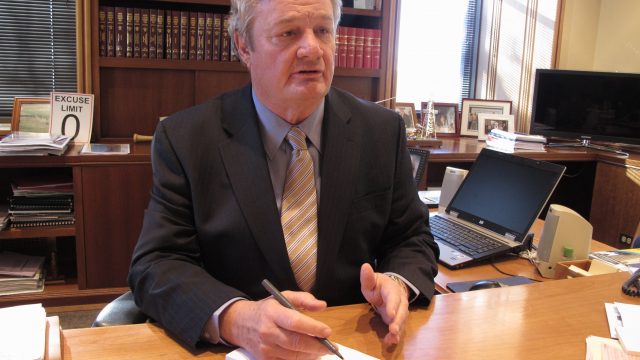Interesting: States That Increased Local Spending Have Not Reduced Property Taxes

Since before the 2007 Legislative session, North Dakota has been embroiled in a statewide debate about property taxes. Judging by the amount of criticism from the public about property taxes, and the fact that the state’s politicians seek to address it again and again with various schemes, I don’t think there’s any question that a majority in the state see property taxes as a problem.
Why they’ve been asking for solutions from state leaders, as opposed to the local leaders who levy the tax and spend its proceeds, is beyond me.
But that debate aside, what state leaders have done is try to solve the property tax problem by infusing local budgets with more money from the state. From 2007 to 2011, at the behest of Governors John Hoeven and Jack Dalrymple, the Legislature appropriated roughly $752 million in property tax buy downs. For the current biennium, Legislators approved $856 million in property tax buy downs including a one-time $200 million property tax credit and Dalrymple’s plan for a permanent shift in school funding from local to state that cost $656 million in the current biennium.
Because of this huge infusion of state tax dollars, local property taxes have gone down in many parts of the state (though we could argue that it’s at the expense of a permanent increase in spending burdens placed on state tax revenues). The question is, will this solve the property tax problem long term?
Creighton University professor of economics Ernie Goss looks at the historical data from stats that have tried to buy down local property taxes with state tax dollars, and found that the answer is no. In fact, in states that have done this, property taxes and local spending have actually gone up faster:
Between 2000 and 2011 as a share of gross domestic product (GDP), the 26 states that increased state aid to local government raised property taxes by a median of 0.31 percentage points while the 24 states that reduced state aid to local units expanded property taxes by a smaller 0.26 percentage points. Furthermore over the same time period, the same 26 states that increased state aid boosted local spending by 1.05 percentage points while the same 24 states that reduced state aid enlarged local spending by a smaller 0.27 percentage points.
Thus, past data show that not only did state aid not provide property tax relief, as customarily promised, property tax burdens and overall local spending actually rose more quickly for states that grew state aid more swiftly.
Privately, many state legislators I’ve spoken with express frustration about this approach to property taxes. They are not at all confident that this approach is sustainable, or that it will produce the sort of change in the trajectory of property tax burdens that most citizens want.
Based on Goss’ research, these legislators are right to be concerned.




